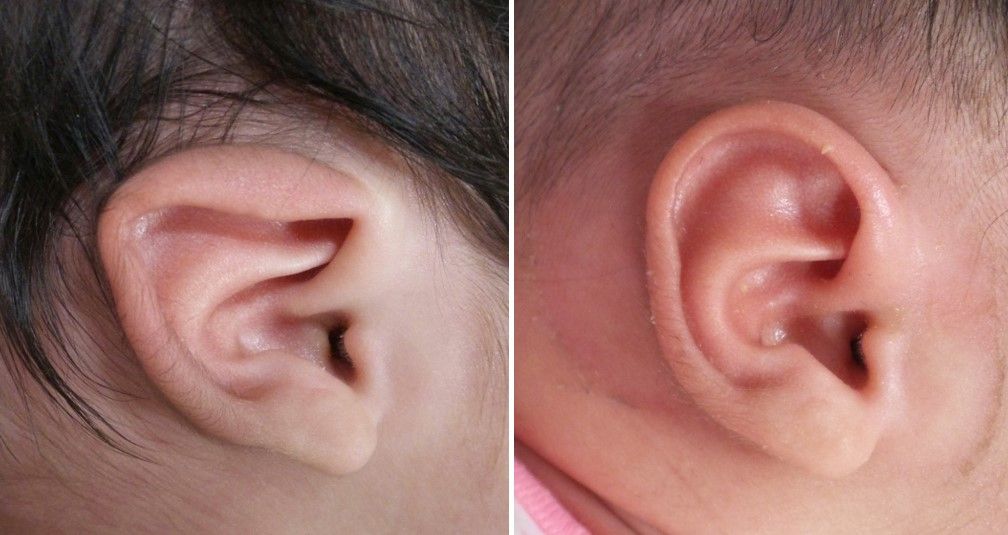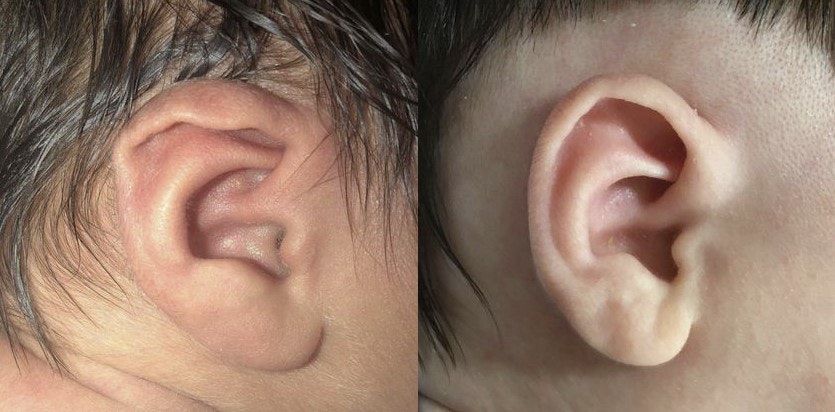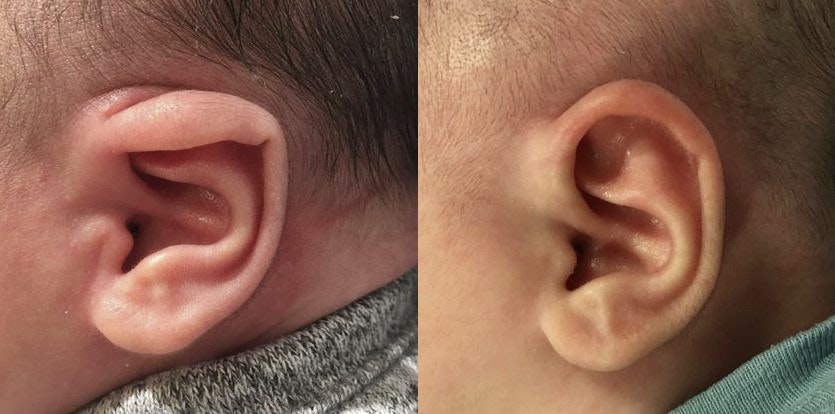Ear lidding deformities represent about 25% of all infant ear deformities throughout the world. Parents will often call the office and state that their “baby’s ears fold over at the top”. Through Dr. Jandali’s safe and effective technique, he can treat your baby’s ear deformities with ear molding.
What Are Ear Lidding Deformities?
Ear lidding deformities, also known as floppy baby ears or lop ear, cause the upper portion of the ear to fold over. It occurs when the upper ear cartilage is distorted and pushed downward and forward. It can also occur if the top part of the anti-helical fold, the curved cartilage along the outer ridge of the ear, fails to develop. This then causes it to fold in varying degrees. Ear lidding deformities usually involve the upper third of the ear.
While ear lidding deformities can occur with constricted ear deformities, lidding ears do not have missing cartilage. Instead, the ear’s cartilage is developed abnormally. Ear lidding doesn’t cause hearing loss or difficulty but can be a source of embarrassment later on in life.
Non-Surgical Correction in Babies with Ear Lidding Treatment
As one of the most common ear deformities in newborns, ear lidding deformities can sometimes improve on their own. However, if they don’t improve within the first seven to ten days of life, they will need treatment with ear molding. Therefore, if your baby’s showing signs of ear lidding deformities past their first week, then seeking early treatment is the key to treating it properly.
Ear lidding is easily corrected with the ear molding procedure. Ear molding is a non-surgical treatment that applies a silicone prosthesis to adjust the shape of your baby’s ear. This is possible due to the malleable nature of ear cartilage in young infants. The prosthesis will be applied to the area of the ear to be adjusted for a period of four to six weeks. During this time, the shape of the ear will be gently bent to the desired result.
Ear molding is non-invasive, which avoids the risks of a surgical approach. This option provides excellent results and includes numerous benefits:
- Responsive: In the period following childbirth, infants maintain a high level of maternal estrogen in their ears. The presence of this hormone keeps the ears soft and pliable. As the baby ages, these levels reduce, causing the cartilage to become less pliable and unable to be corrected non-surgically.
- Painless: The malleable nature of your newborn’s ear cartilage means this process isn’t painful for them.
- Effective: The ear prosthesis is worn for a minimum of four weeks. In instances where the deformity has not fully responded to treatment, another two to four weeks of treatment will be needed. A new ear mold needs to be applied at each visit in order to make adjustments as the shape of the ear changes as it is being corrected.
- Non-Surgical: In addition to its high success rate, the non-surgical nature of ear molding is the most obvious benefit. There’s no need for anesthetic, no risk of infection or complications with healing, and no painful healing process for your baby.
During your newborn’s visits, Dr. Jandali will apply the molds and monitor the progress to ensure the best outcome of naturally shaped ears. Dr. Jandali has helped countless infants achieve a normal ear appearance through ear molding. He has the experience to evaluate your concerns for your infant’s ear shape and recommend the most effective treatment.
Receive Ear Lidding Treatment at Dr. Jandali’s Office
If you have a newborn with ear lidding deformities, then non-surgical ear molding may be the best solution. Dr. Jandali offers non-surgical ear molding treatment for infant ear deformities at his practice in Connecticut. For more information, contact Dr. Jandali’s office today to discuss your baby’s treatment options. If you wish to learn more, consult your pediatrician to learn whether your baby is a candidate for ear molding.
Ear Lidding Treatment Gallery




